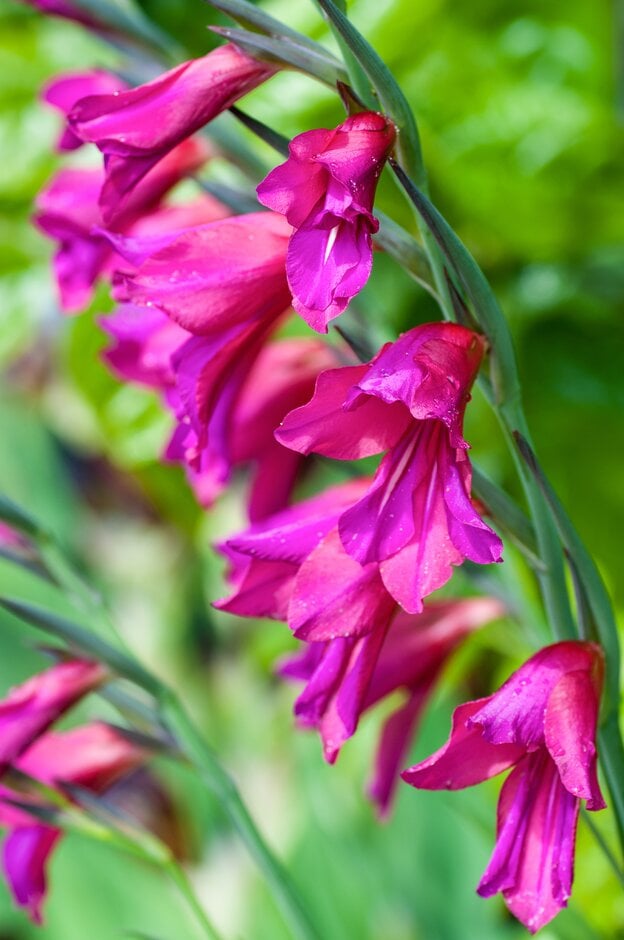Gladiolus nanus 'Byzantinus'
Byzantine gladiolus
A perennial to 90cm, growing from a corm, with erect sword-shaped leaves nearly as tall as the flowering stems. Deep magenta, funnel-shaped flowers with paler markings on the tepals, are 5cm in width, and borne in erect spikes from late spring to early summer
Size
Ultimate height
0.5–1 metresTime to ultimate height
2–5 yearsUltimate spread
0–0.1 metreGrowing conditions
Moisture
Well–drainedpH
Acid, Alkaline, NeutralColour & scent
| Stem | Flower | Foliage | Fruit | |
| Spring | Purple Red | Green | ||
|---|---|---|---|---|
| Summer | Purple Red | Green | ||
| Autumn | ||||
| Winter |
Position
- Full sun
Aspect
South–facing or West–facing
Exposure
Sheltered Hardiness
H5Botanical details
- Family
- Iridaceae
- Native to GB / Ireland
- No
- Foliage
- Deciduous
- Habit
- Columnar upright
- Potentially harmful
- Ornamental bulbs, not to be eaten. Wear gloves and other protective equipment when handling. Pets: Harmful if eaten. For further information and contact numbers regarding pets, see the HTA guide to potentially harmful plants
- Genus
Gladiolus are cormous perennials with fans of sword-shaped or linear leaves and spikes of funnel-shaped flowers
- Name status
Correct
- Plant range
- S Spain, Sicily
How to grow
Cultivation
Plant corms 10-15cm deep and 10cm apart in any well-drained with full sun. Ideal for planting in groups in the border or in gravel gardens, suits naturalising in long grass and meadows if planted out when in growth; spreads freely from cormlets. See bulbs: naturalising and bulb cultivation
Propagation
Propagate by separating cormlets when dormant
Suggested planting locations and garden types
- Cottage and informal garden
- Wildflower meadow
- Coastal
- Gravel garden
- Wall side borders
- Cut flowers
- Flower borders and beds
Pruning
Tidy after foliage dies down if necessary
Pests
May be susceptible to gladiolus thrip, aphids and slugs
Diseases
May be susceptible to gladiolus corm rot, grey moulds (Botrytis), Fusarium bulb rot, gladiolus core rot, gladiolus dry rot, gladiolus scab and neck rot, fungal leaf spot, and virus diseases
Love gardening
Sign up to receive regular gardening tips, inspiration, offers and more
View our Privacy Policy
Get involved
The Royal Horticultural Society is the UK’s leading gardening charity. We aim to enrich everyone’s life through plants, and make the UK a greener and more beautiful place.
